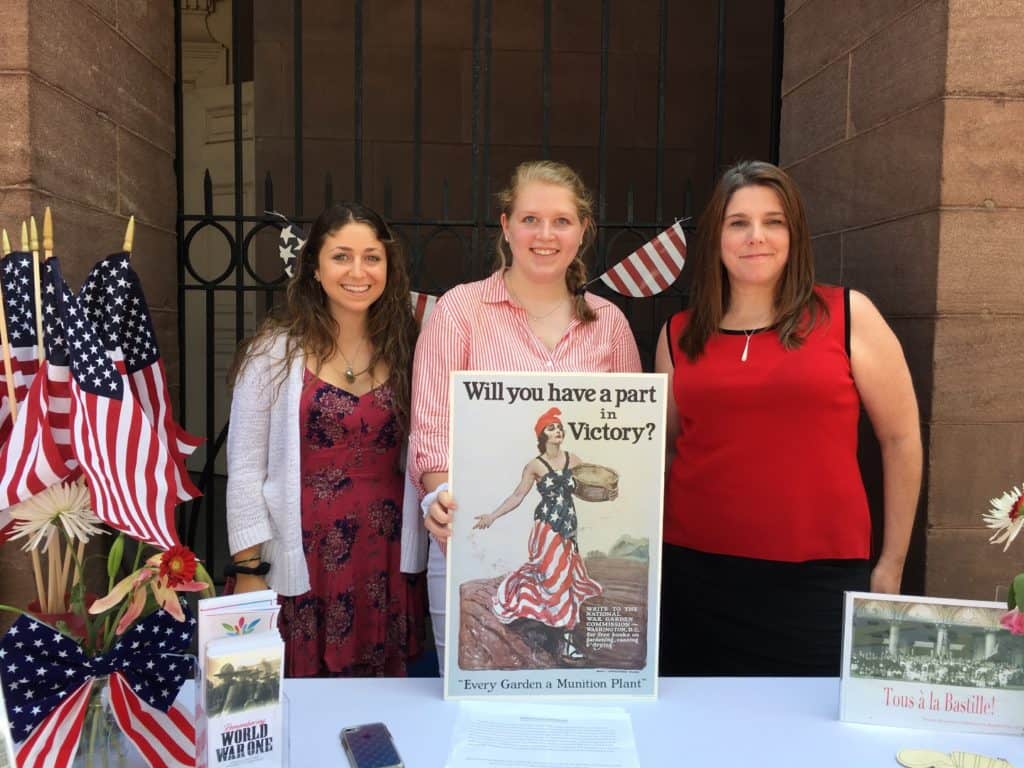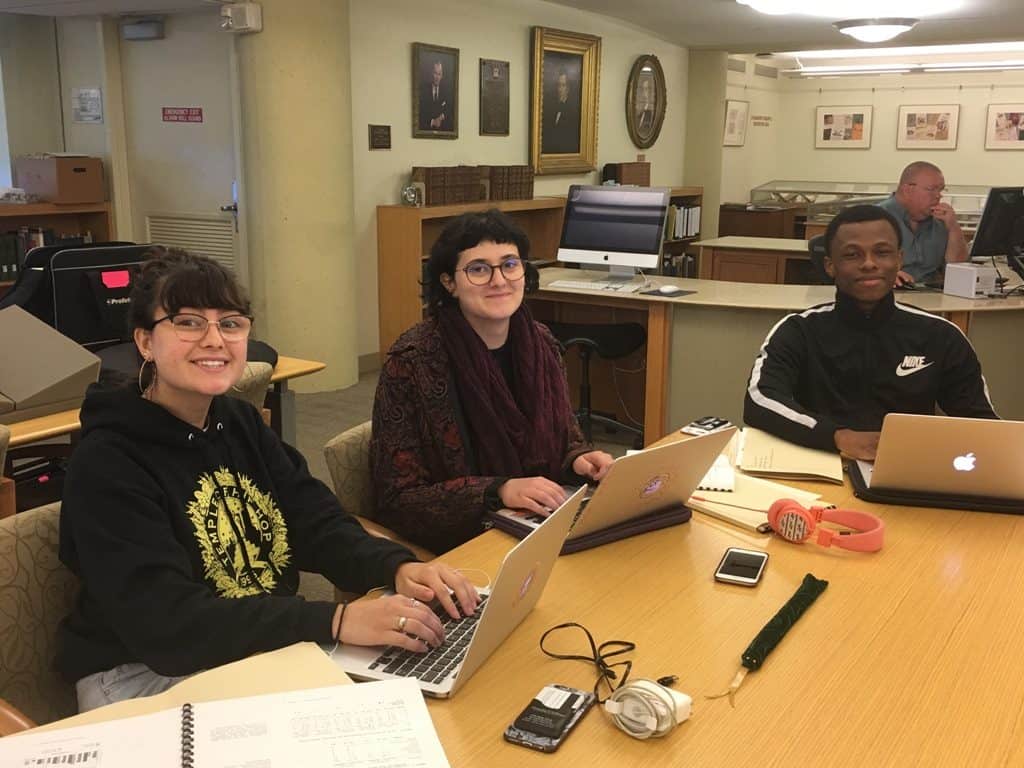Humanities in Hartford
With its rich cultural and literary history, Hartford is an ideal place to pursue humanities scholarship—the study of how people interpret and record shared human experience. Just ask Trinity students Megan Caljouw ’20 and Melani Norsigian ’20, both double majors in English and French, who spent 10 weeks of the summer immersed in humanities research.
As participants in Trinity’s Public Humanities Collaborative program (PHC), funded by a grant from The Andrew W. Mellon Foundation, Caljouw and Norsigian held two research internships—one at the Connecticut State Library and another working closely with Sara Kippur, Charles A. Dana Research Associate Professor of Language and Culture Studies.

At the state library, Caljouw and Norsigian explored World War I archives to develop an exhibit on civic engagement and volunteerism. Heroes on the Homefront: A Look into the Role of Connecticut Citizens During World War I opened July 20 at Hartford’s Old State House and features soldiers’ letters, photographs, and wartime recipes that illustrate the national effort to stretch the food supply. “It was exciting to see non-history majors get so engaged in history,” said Christine Pittsley, state library project manager and internship supervisor, who noted that Caljouw and Norsigian also took on social media marketing, launching the @CTStateLibrary Instagram account, in addition to preparing the exhibit.
Back on campus for their academic research project, Caljouw and Norsigian studied the work of two French novelists, Alain Robbe-Grillet and Nathalie Sarraute. Under Kippur’s tutelage, the students traveled to the Grove Press archives at Syracuse University to comb through the authors’ original correspondence, photos, and other documents. Caljouw and Norsigian also created digital story maps to capture and share visually the authors’ travels across America and the impact their work had on academia. View Caljouw’s story map on Alain Robbe-Grillet and Norsigian’s story map on Nathalie Sarraute.
“We didn’t anticipate that our projects would intersect much, since one had us focused on local efforts during World War I, 1914 through 1918, and the other was about the work of two postmodern writers, mainly in the late 20th century,” said Caljouw.
Norsigian said, “We found both projects contained international relations themes. The foreigners’ perspective on America was revealed in the letters of our French novelists. The Americans’ perspective on foreigners appeared in soldiers’ letters to their families during the war. Both projects led us to reflect on current U.S. relations with foreign countries and how peoples’ perspectives have evolved today.”

Aboubacar Bakayoko ’20, who is studying international studies: global studies and anthropology, said he began his PHC internship at the Amistad Center for Art & Culture at the Wadsworth Atheneum by conducting museum visitor surveys for an upcoming exhibit, What We Wore, which the center plans to launch in spring 2019. Working alongside Lucy Pereira ’20 and Amistad Center staff, Bakayoko helped design posters and postcards and develop a digital timeline for the What We Wore exhibit, which will feature clothing “to tell another side of African American history,” he said.
He also conducted academic research with Garth Myers, Paul E. Raether Distinguished Professor of Urban International Studies, for Myers’s forthcoming book. For that project, “Rethinking Urbanism: Lessons from Postcolonial Studies and the Global South,” Bakayoko and fellow researchers Elisabed Gedevanishvili ’20 and Giana Moreno ’20 spent much of their time at the Watkinson Library, studying and culling source documents. The team also interviewed Hartford residents. “I learned how to navigate between archival work and interviewing people to gain their insights into the daily struggles of the city,” said Bakayoko. “It was interesting to learn about Hartford from the perspective of people who live in the city.”
Community Learning Initiative Associate Director Megan Hartline said, “Students in the Public Humanities Collaborative get the opportunity to work as research assistants on both cutting edge humanities scholarship with Trinity professors and new exhibits and public projects with their Hartford community partners. Additionally, Hartford is a particularly exciting place for students to be working on public humanities projects because they get a chance to learn more about the extensive cultural and historical aspects of the city over the course of the summer.”
For more information on the Public Humanities Collaborative, view a full list of summer 2018 projects and participants, or contact Megan Hartline.
Written by Kathy Andrews
